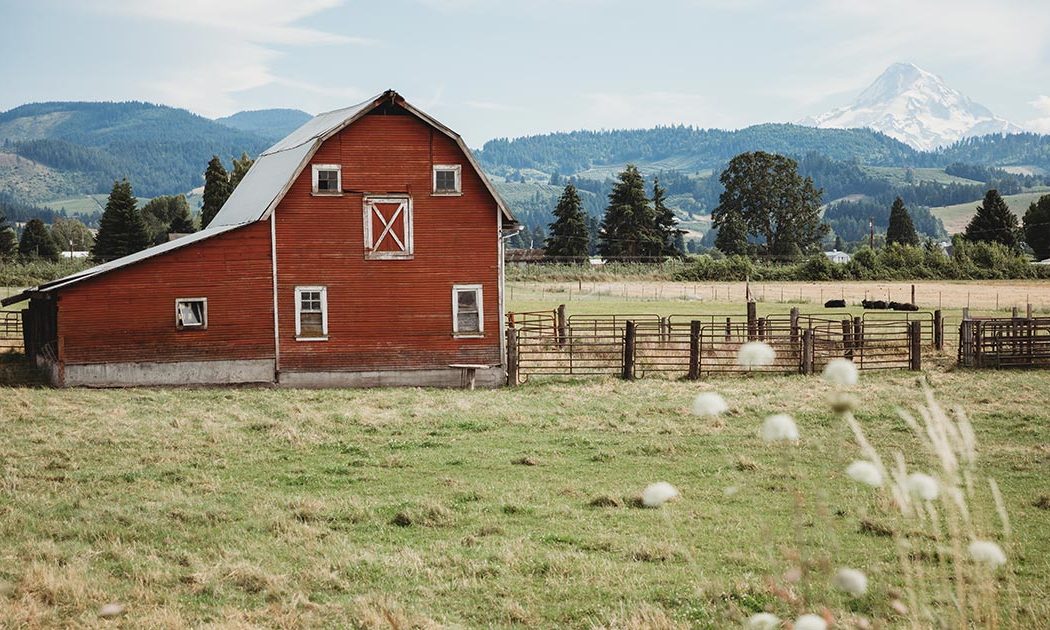What are Agricultural Exemptions and How Do They Impact Buying Land?
A little over 1 billion acres of land across the USA is considered agricultural. This could be for a variety of purposes, from owning a farm to cultivating crops. While not everyone wants to spend their days operating a truck as the sun hits tall corn stalks, there are exceptional benefits to purchasing land that has agricultural exemptions (sometimes called AG exempts).
The world is shifting, with more and more properties moving over to qualify as small ranches or farms. Even a property with a small backyard garden can offer tax advantages and benefits when considering where to purchase next. In this article, let’s explore how AG exempts can improve the value of a home, lower its tax obligations, and make the land more attractive for investing.
What are AG Exempts?
The idea behind agricultural exemptions is to make operating a farm or growing space more attractive. The thin profit margins of farmers and ranchers can sometimes threaten the reliable food supply our nation demands for feeding the rest of the population.
For example, if you are awarded an agricultural tax exemption in your state (and those requirements will shift by location), you could experience lower tax obligations. That is because the property’s value is based on the land’s productive agricultural value, not the comparative property’s general market value.
In most cases, to become eligible, you’ll need to prove that a specific size (or space) of your property is being used for agricultural purposes. Living in a state like Pennsylvania would mean you have to have around 10 acres of land, generating at least $2,000 in annual revenue.
What Type of Land is Agricultural?
Working with a local real estate agent or well-informed investment firm will give you the best agricultural land access. These tend to fall into one of these categories:
- Farms: Land used to rear animals or grow crops.
- Ranches: Land used for livestock production or grazing.
- Homesteads: Homes using the surrounding property to “live off the land.”
- Hobby Farms: Farms or ranches used for pleasure or recreational purposes.
Local zoning laws and regulations will play a part in what you can secure under any available AG exemptions, but in general, you can expect pretty relaxed rules. The flexibility of being able to build or operate pretty much whatever you want on the property is part of what makes agricultural land so attractive.
Think about it this way. You can purchase this land for a single-family home with a small operation of 50 head of cattle, or you can invest in a large property and turn it into a goat yoga retreat and still receive the same financial benefits.
Why Invest in Agricultural Land?
Besides the AG exemptions in tax incentives, you are bound to find a more stable long-term investment with agricultural property compared to others. This is due to the historical increases in farmland values and the potential revenue from crop yields or rental payments.
On average, the annual historical returns for farmland and agricultural spaces have exceeded national inflation by around 6.1%. In some areas, farmland values have increased well over 14%.
These are strong figures that have outperformed all other asset classes, with the only exception being the Dow Jones REIT index. The impact of these purchases ensures you have low volatility in tougher economic climates with low correlation to the US stock market. That will give you an inflationary hedge as high-demand commodities like corn and grain continue to increase in parallel to the rising population.
What Types of Land Use Qualify for an AG Exemption?
First, it’s important to note that it can be tough to turn non-ag-exempt land into compliant territory. That is another reason why buying a property that already has these exemptions is so beneficial. You won’t have to spend 5-10 years cultivating the land with crops or cattle to qualify.
That being said, you can use quite a bit of “out of the box” thinking to turn a property into something that qualifies as AG exempt. One popular option is cultivating bees. Science it has been recognized that bee ownership improves the overall quality and quantity of crop yield and is necessary to our national food supply.
Then there are other ideas like bat houses, duck boxes, and restoring ponds and waterways. One of the most lucrative options is renting out grazing land and space for others to use. You can easily invest in an agricultural-exempt property and then split the purpose of the land by renting it to other farmers, ranchers, and garden enthusiasts.
As long as you are compliant with local zone and AG-board rules, you have a lot of leeway to get innovative. The end goal is helping to improve, maintain, or expand food and natural resources.
Final Thoughts
Take an example through your local realtor or bank where you are eyeing agricultural land. For instance, a value of $5,000 per acre in one county could result in $115 in taxes. Reframed through an AG exemptions, that same land at only $100 productivity value only pays $2.30 per acre.
Now stretch that example to a 40- or 50-acre space, and you quickly see tax savings with exponential investment opportunities. Granted, this example is local to Parker County, Texas, but you get the idea.
With the proper application of agriculture exemptions and a little bit of research, you could easily save thousands to tens of thousands in annual tax obligations. That fact alone makes buying land under AG exempts a worthwhile investment for any single or group entity.

